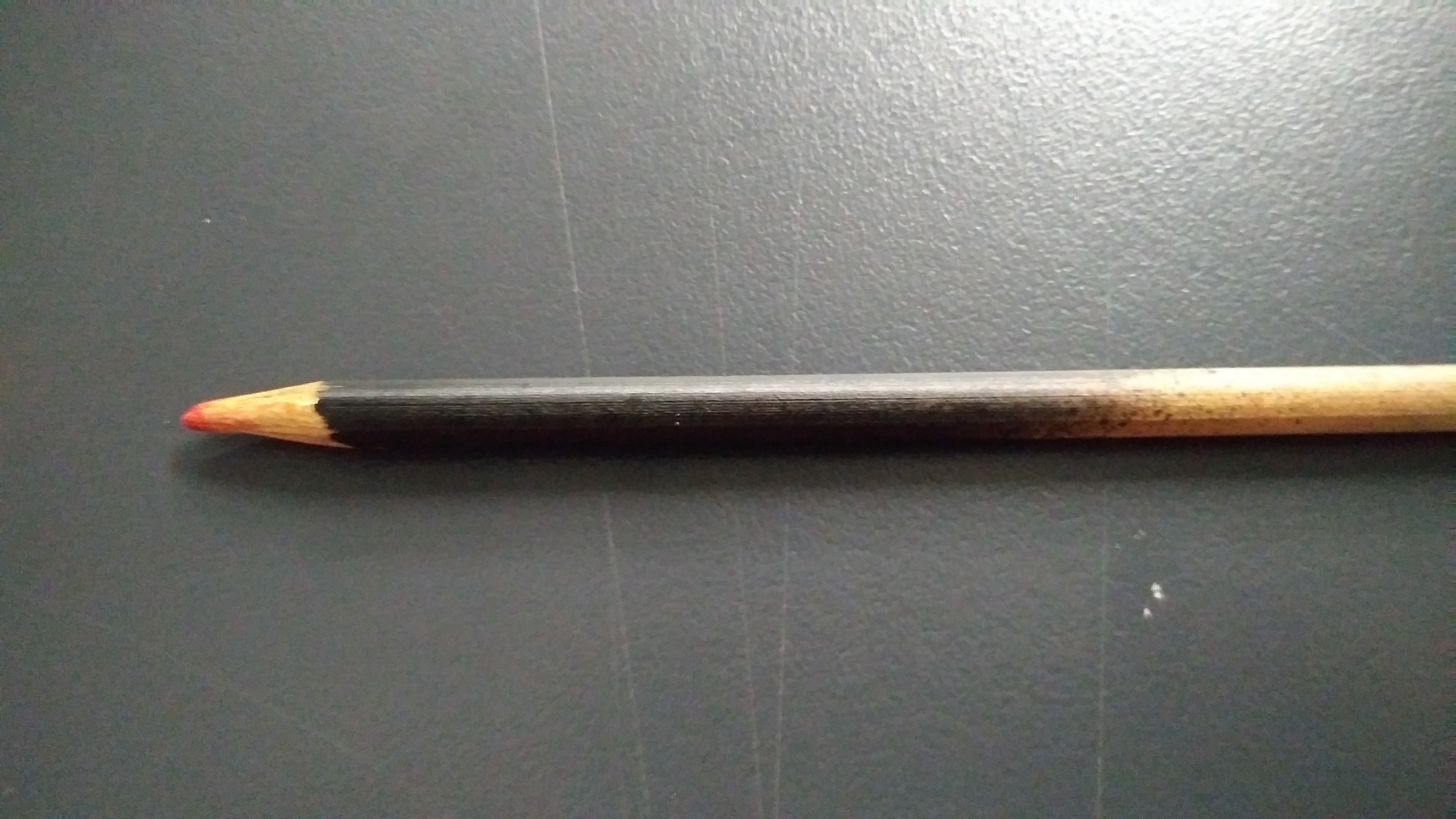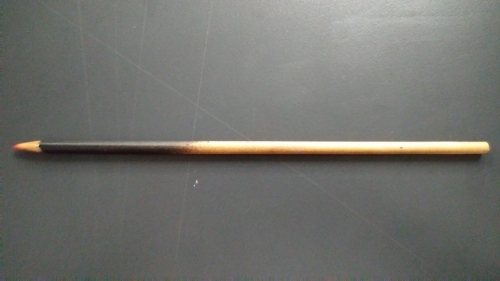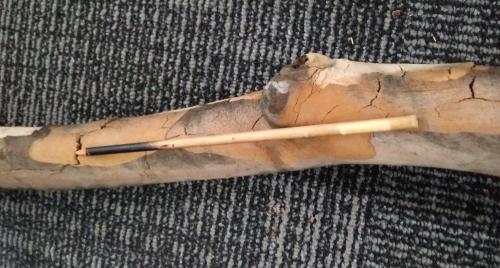
SCROLL TO BOTTOM FOR REFLECTIONS
Context:
The broad context for this inquiry is driven by Graham Harman and Levi Bryant's object-oriented ontology (OOO). One aspect of OOO that particularly interests me explores other interactions with the object could be had that re-contextualize the object, and re-define its purpose. According to Harman, objects are in perpetual flux, constantly developing relations between other objects around them, and developing themselves in turn because of these interactions (Harman 2018).
Method:
I will examine through written response the object of the pencil, its previous existence as a tree, and its changing relationship between the hyperobject of the sun as a tree and as a pencil.
Response:
Ecophenomenology in Morton’s Promise of Object-Oriented Ontology suggests that we must reconstruct the way we consider objects in order to revise our ideas about the subjects that think about them (Morton, 2011). Morton (2011, p. 16) asserts that OOO is a “flat ontology”, meaning that ‘hallucinations and the idea of purple are also objects, though perhaps not of the same kind as toilets and ozone.’ Morton continues to discuss the emergence of “hyperobjects”, which are objects so massive in scope and distribution that we generally consider them as forces.
This is true for the hyperobject of the sun. The sun has a plethora of relationships, and is intimately involved with trees as objects. It is also a collection of other smaller objects in relationships with one another, though OOO would argue that the fact that these relationships as a collective permit other, greater relationships, that the sun should be considered as an object itself. As an object, it facilitates the quality of growth in trees, but is also capable of encouraging decay and damage in the same object. For example, sunscald when the sun interacts with snow in winter months and damages tree bark. One could argue that this damage could not be possible without snow, but it also would be impossible without the relationship of the sun, and therefore remains an attribute of the sun’s nature.
Nature can be also considered from a standpoint of vitalism. If trees have the ability to construct themselves, react to stimuli, form relationships, and in some cases actively resist human interventions (Davies 2015) can one then argue that trees be considered as agents themselves? Should we then consider them as subjects, rather than objects? Would a length of wood, once separated from the main body of the tree, then be considered an object? This is discussion of consciousness in the context of OOO is particularly interesting, as is the debate of what constitutes consciousness. Does an object with conscious awareness cease to be an object in the realm of OOO?
This leads me back to the relationship between the sun and the tree. The sun can only interact in a beneficial manner if the nature of the object of its interaction is also so inclined. If the tree is ‘dead’ it can no longer benefit from the light provided by the sun. In fact, the sun actively contributes to its degradation. Through the lense of OOO, this leads us to very interesting reflections upon the attributes of the object.
Does a change of state so significant as death, which drastically alters the way the object behaves, change the object itself? Does the tree, once dead, cease to be a tree? If not, is it in its nature as a tree to die?
Harman maintains that when objects combine, they create new objects. In this way, he defends an a priori metaphysics that claims that reality is made up only of objects and that there is no "bottom" to the series of objects (Harman 2018). This suggests that relationships between objects can facilitate the creation of new objects, which can further relate to other objects.
He continues to discuss that the ‘destruction’ of objects is impossible with an example of fire and cotton interacting, suggesting that fire does not touch the essence of that cotton which is inexhaustible by any relation, but that the interaction is mediated by a caricature of the cotton which causes it to burn (Harman 2018). This interaction does not compromise the nature of the cotton, though it does create new objects i.e. ash and smoke. Thus, with the object of the pencil being carved from wood, it is the properties of the wood that allow us to shape it, rather than the wood being shaped by us. It is the inclination of the wood to be transformed, as an object in flux. As Harman states, it creates a new object through this combination with tools and graphite, but retains the properties of wood. In another context, it would still relate with objects in the same way as a tree, though the interactions and relationships that facilitated its creation as a pencil have also facilitated the possibility of new relationships.
In the same sense, the pencil ceases to be a tree after it is separated from it, and the tree ceases to be a tree once it enters into a relationship with its environment that results in its death. The pencil also ceases to be a pencil once taken out of context of its use as a pencil. As Chris and I discussed in class, if the pencil were to be discarded in a forest and used as a bridge over an obstacle by an insect, that then becomes the defining feature of the object, and results in a change in that object. The combination of insect and pencil results in the creation of a new object of a bridge. Similarly, the combination of a dead tree and an animal looking for refuge results in the creation of a home. The relationship between the sun and a tree changes the tree from an object flourishing and photosynthesizing during the day to an object in stasis overnight. However, this can easily be escalated out of proportion. For example, does the relationship between a pencil (or bridge) and the sun change it fundamentally enough to create a new object? I.e. does it create the new object of a hot pencil or a cold pencil as the day passes? I suppose that Object-Orientated Ontology would say yes, and therefore reinforce that objects are not exhausted. But for all that change, I’m honestly surprised they aren’t.
Reflection for Folio:
This theme is closely aligned with Object-Oriented Ontology, which attempts to separate the consideration of an object from the context of human consumption My current practice is focused largely on sensory experience received through interactions with objects. Though this project is fixating upon human experience, I am attempting to make the object or experience of the object the focus of the animation to highlight, which coincidently is similar to the aim of Object-Oriented Ontology. However, in writing my response to the theme, I began to grasp what a difficult prospect it is to separate an object from our considerations of it. I was writing about how in OOO, changes in relationships between objects have the capacity to spurn the creation of an entirely new object.
My specific inquiry was into whether the relationship between the sun and a pencil created a new pencil when the pencil changed from hot to cold. However, I came to the realization that it would still be a human consideration of the object to make note of its temperature. Perhaps if the molecules of the pencil were heated to the point that they vibrated at a different frequency (a phenomenon not possible to experience by humans without tools) we could suppose that the pencil would be fundamentally changed by the relationship? Still, it seems ultimately paradoxical to be writing about the possibilities of OOO and making presumptuous suppositions from my human point of view.
So, how does this relate to my ongoing project? Well, I realize now that it might be useful to consider objects before our relationship to them, but to properly convey narrative and help the audience relate to the story, some character or anthropomorphising may be necessary.
Or, if not necessary, unavoidable.
About This Work
By Evan McInnes
Email Evan McInnes
Published On: 09/04/2019


